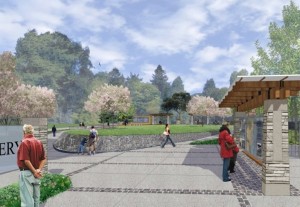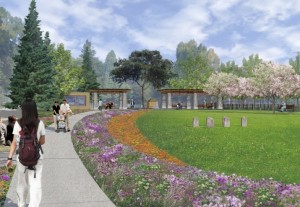Cultural Heritage Garden
Most people overlook the flat, empty gravel lot in the southwest corner of Southeast Portland’s tree-lined Lone Fir Cemetery. But this acre-and-a-quarter plot of land, known as “Block 14,” has a fascinating history—and future. In years past, this land sheltered the remains of two groups of marginalized Oregonians: early Chinese workers, and patients from a pioneer-era hospital for the mentally ill and indigent. Until recently, their stories have been mostly forgotten and unnoticed by the larger community.
Now, Block 14 is rising from obscurity as the Cultural Heritage Garden, a place to reflect on and connect with important facets of our region’s history. In 1998 Lango Hansen Landscape Architects designed a community-based plan for the future of the site. An entrance plaza on the southwest will welcome visitors to Lone Fir. An oval green honoring the Chinese workers who were buried here will be flanked by a seeping fountain and expansive wildflower beds, while curved paths will lead beneath a pergola to the east, ending in a garden destination dedicated to the asylum patients.
This accessible space will be open to all for reflection and respite from the everyday world. Visitors will also gain insight into the social climate of Oregon during the nineteenth century. The Chinese workers, although persecuted in death as they were in life, were instrumental in building the Pacific Northwest. The patients in Dr. Hawthorne’s asylum came from across the spectrum of Oregon society, committed not just for mental disability, but for poverty, physical disability, lack of English, or behaviors unacceptable in that era.
Plans
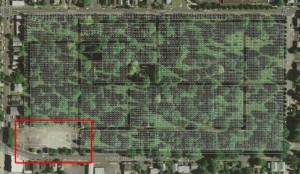 Today, the former County building long since razed, Block 14 is a barren gravel landscape that feels cut off from the cemetery; unlike the rest of Lone Fir, there are no trees, plant life or headstones. Cleared and waiting for restoration, the site sits empty, a rough, vacant patch overlooking a bustling intersection. The Lone Fir Cemetery Foundation seeks to take this blank slate and aesthetically reunite it with the rest of Lone Fir to create a new, visible entrance to the cemetery in honor of those now-anonymous souls who were buried in this nondescript corner.
Today, the former County building long since razed, Block 14 is a barren gravel landscape that feels cut off from the cemetery; unlike the rest of Lone Fir, there are no trees, plant life or headstones. Cleared and waiting for restoration, the site sits empty, a rough, vacant patch overlooking a bustling intersection. The Lone Fir Cemetery Foundation seeks to take this blank slate and aesthetically reunite it with the rest of Lone Fir to create a new, visible entrance to the cemetery in honor of those now-anonymous souls who were buried in this nondescript corner.
The Cultural Heritage Garden at Lone Fir Cemetery will offer long-overdue recognition to the Chinese workers who faced implacable racial segregation while they labored diligently in a foreign land. We will also honor Dr. Hawthorne for his compassionate, innovative, and enlightened approach to mental-health care, and shine a light on his patients—members of an often-misunderstood population that still battles social stigma and lack of public understanding and acceptance.
The design for the Cultural Heritage Garden includes separate memorials for the early Chinese sojourners and the patients of Dr. Hawthorne, a community gathering space, and an interpretive kiosk, all within a garden landscape. This is the final piece that will make Lone Fir Pioneer Cemetery complete, offering greater opportunity for learning, deep introspection, and contemplation.
Features of the Cultural Heritage Garden will include:
– A new pedestrian entrance to Lone Fir Cemetery that includes welcoming signs with information about the Cultural Heritage Garden and the history of the cemetery
– A seeping stone fountain flanked by curved paths that surround the area
– An oval green composed of low-growing, drought-tolerant grasses and ground cover interspersed with flowering trees
– Interpretive stone panels designed to convey the journey of early Chinese workers, and marking locations where remains were found in 2005 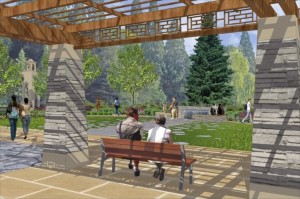
– A Chinese funerary burner and trellis similar to original structures here that were later demolished
– A display of artifacts from the Chinese workers and Dr. Hawthorne’s asylum
– A shallow contemplative pool and stonework with the names of Dr. Hawthorne’s patients engraved
– A series of interpretive art pieces telling stories of the asylum patients’ experiences
– An intimate garden inspired by Victorian-era planting design that was popular during Dr. Hawthorne’s time
– Native Oregon plants as well as groupings of plant species brought to the state by early pioneers
History
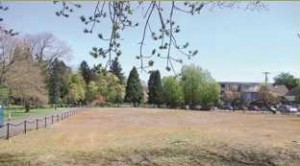 In 1891 “Block 14,” a full city block at the southwest corner of Lone Fir Cemetery, was obtained by the City & Suburban Railway to use for the burial of its deceased Chinese workers. Eventually this site became known as the “Chinese Burial Ground,” set aside for the early Chinese sojourners who built Portland’s seawall and much of the rest of its infrastructure, constructing many of the urban systems we take for granted today.
In 1891 “Block 14,” a full city block at the southwest corner of Lone Fir Cemetery, was obtained by the City & Suburban Railway to use for the burial of its deceased Chinese workers. Eventually this site became known as the “Chinese Burial Ground,” set aside for the early Chinese sojourners who built Portland’s seawall and much of the rest of its infrastructure, constructing many of the urban systems we take for granted today.
In keeping with traditional Chinese culture, the bodies interred at Lone Fir were originally intended to be held there only temporarily until their families could arrange to bring their bones home to China to be buried with their ancestors. Many of the Chinese workers had made arrangements for their remains to be sent back to China should they face untimely deaths in Oregon. After a specified amount of time, their bones were to be sent back to their home provinces in small metal boxes. For a variety of reasons, however, many of the bodies remained at Lone Fir, forgotten.
During 1864 to 1883, asylum patients from the Oregon Hospital for the Insane were buried near Block 14. In those days, asylum patients often included—in addition to individuals who were afflicted with mental health conditions—those who were physically incapacitated or impoverished, or who did not speak fluent English. Dr. James C. Hawthorne, who established and ran the hospital, was known for the compassionate treatment of his patients, which included paying for some two hundred burials in Lone Fir Cemetery when families were absent or lacked financial resources. The wooden grave markers were eventually destroyed by climate or fire, and, while the exact location of these graves has been lost, it is believed that the majority of Hawthorne’s patients are buried along the border of Block 14, adjacent to what was then called the “Chinese Burial Ground.”
In the 1940s, at the request of Multnomah County—then the owner of Lone Fir Cemetery—the Chinese Consolidated Benevolent Association of Portland began to disinter many of the remaining bones from Block 14 to be sent back to China, and by 1948 the last of the known remains had been exhumed and shipped to Tung Wah Hospital in Hong Kong. The County bulldozed the area and erected a maintenance building, the former use of the property generally forgotten. Most people who worked in the building, parked in its parking lot, or lived nearby could do so without ever knowing that this had once been a functional part of the cemetery.
By the beginning of the twenty-first century the building had fallen into disrepair, and in 2004 the County announced its intention to auction off Block 14 for development. As word of this plan spread, groups such as the Buckman Community Association and Friends of Lone Fir Cemetery raised concerns that human remains might still be buried at the site. Research undertaken by the Oregon Historical Society and the Chinese Consolidated Benevolent Association found records showing that intact burials likely still existed here. A 2005 archaeological analysis commissioned by the County confirmed that this was indeed the case, and development plans were immediately halted. The County subsequently transferred the title to Block 14 to Metro, Portland’s regional government, which has owned and managed Lone Fir since 1994.
In 2007 Metro convened a diverse group of community members and history experts—including leaders from the Chinese Consolidated Benevolent Association, the Friends of Lone Fir Cemetery, and the Buckman Community Association, as well as members of the mental health community, Dr. Hawthorne’s family, and Portland Fire and Rescue—to develop a new plan for the future of Block 14. This group developed the idea of a garden that would be a memorial to the forgotten individuals who had been buried there.
Metro retained Lango Hansen Landscape Architects and partnered with Friends of Lone Fir, the Chinese Consolidated Benevolent Association, and prominent mental health advocates to reach out to the community for feedback on the aesthetics and cultural appropriateness of the memorial. Metro and Lango Hansen produced the Lone Fir Block 14 Memorial Park Master Plan in 2008, in keeping with the cemetery’s listing in the National Register of Historic Places and with guidance from Oregon’s State Historic Preservation Office.
Metro Block Plan Website: https://www.oregonmetro.gov/historic-cemeteries/lone-fir-cemetery/heritage-garden-and-memorial

